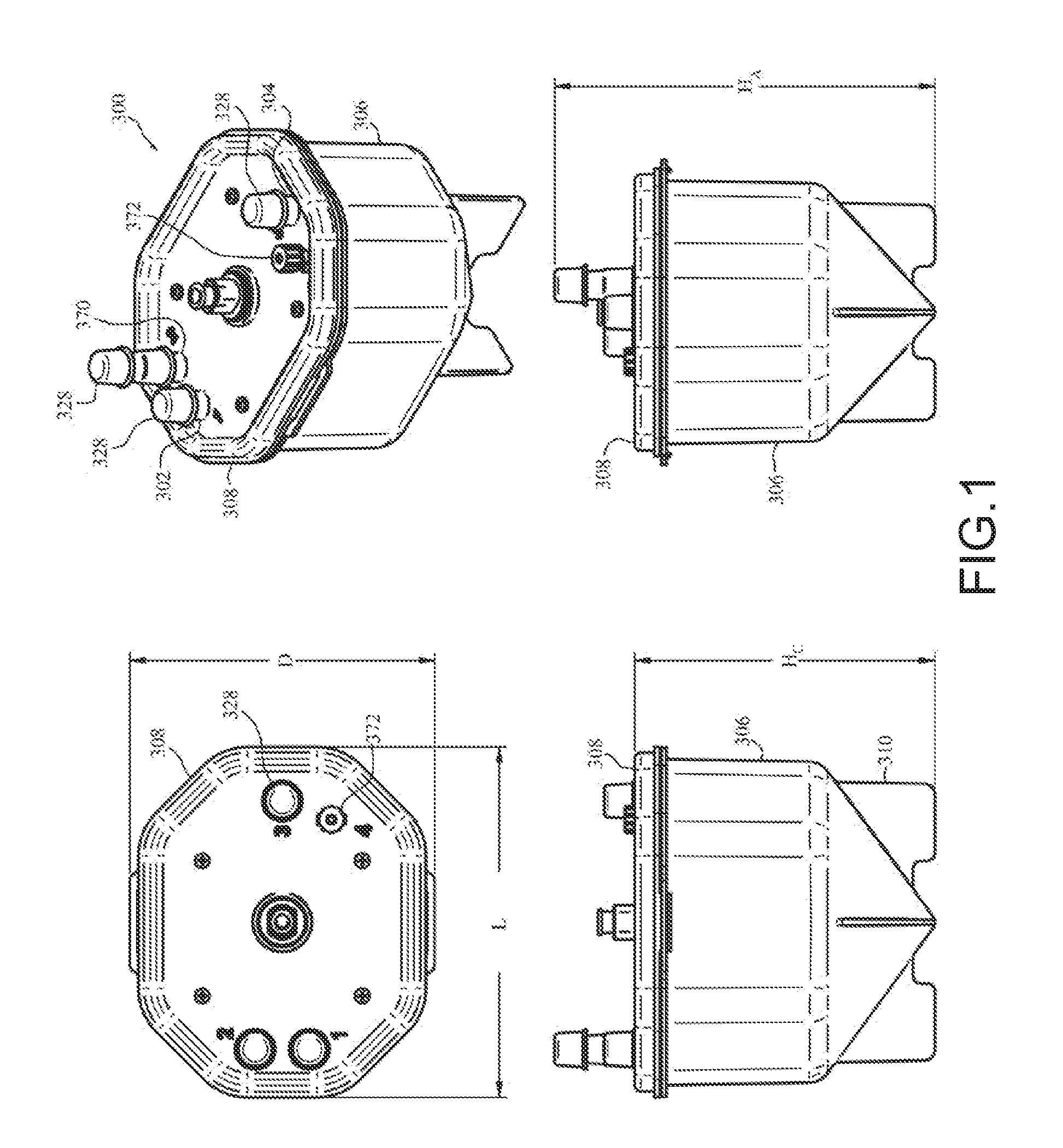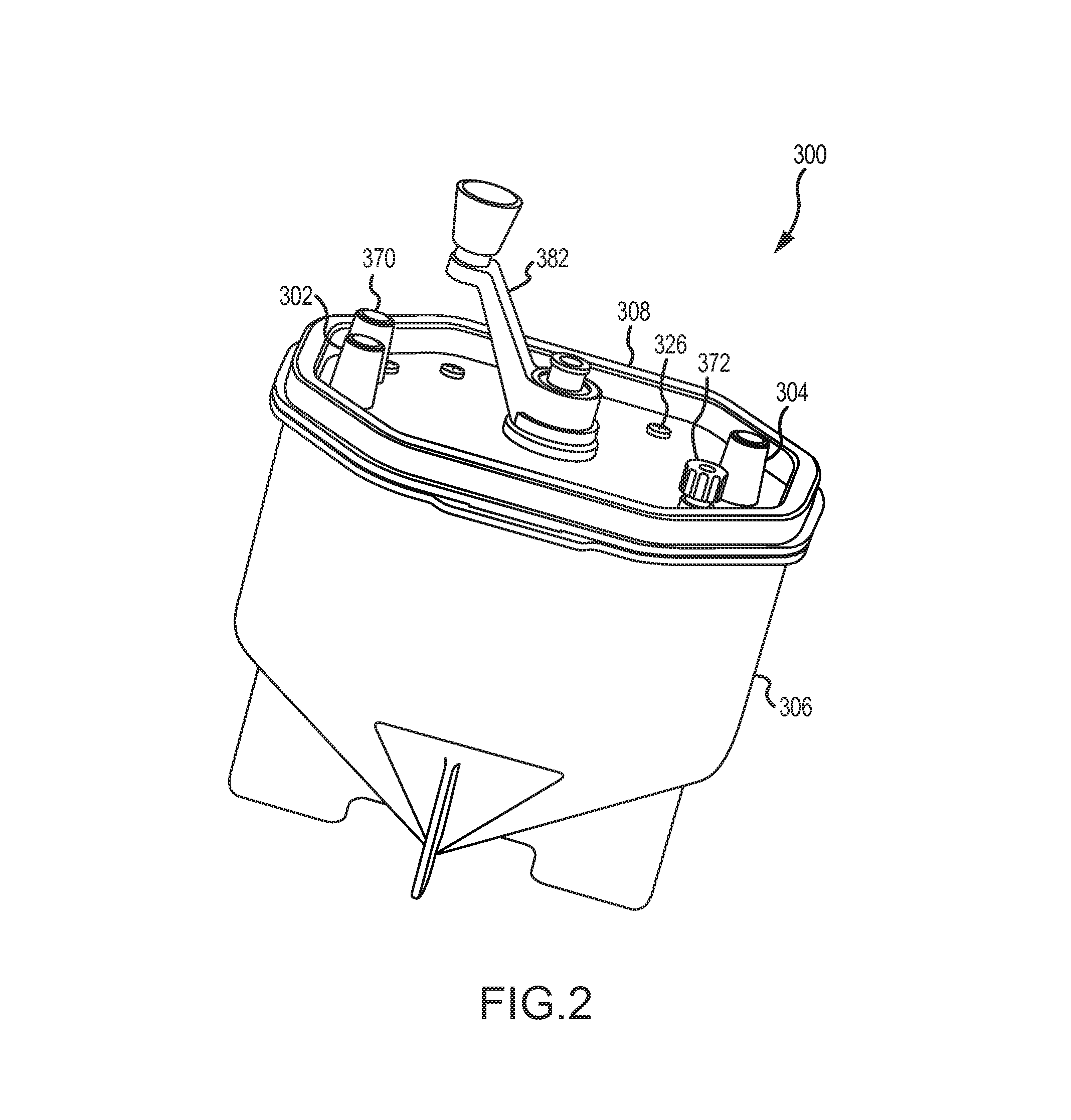Tissue processing apparatus and method for processing adipose tissue
a tissue processing apparatus and adipose tissue technology, applied in the field of tissue processing apparatus and method for processing adipose tissue, can solve the problems of complex removal of cell concentrate material from the container, stringy tissue such as collagen, adding complexity to processing, and stringy tissue components such as collagen, in adipose tissue complicating processing, etc., to achieve low viscosity, reduce viscosity, and high viscosity
- Summary
- Abstract
- Description
- Claims
- Application Information
AI Technical Summary
Benefits of technology
Problems solved by technology
Method used
Image
Examples
Embodiment Construction
[0102]The following description of embodiments may be exemplified by reference to collecting and processing tissue comprising adipose, but the principles described apply also to collection and processing of other tissue.
[0103]Reference is made to FIGS. 1-11 concerning features of an apparatus 300 useful for collection of tissue comprising adipose removed from a patient during a lipoplasty procedure and / or for post-collection, multi-step processing of collected adipose in a single container. In FIG. 1, the apparatus 300 is illustrated in a collection orientation. The collection orientation is the orientation in which the apparatus 300 may be placed during the collection of adipose removed from a patient during a lipoplasty procedure. The apparatus 300 may also be placed in the collection orientation during stages of the post-collection processing of collected tissue as described below. Accordingly, subsequent references herein to the orientation of the apparatus 300, such as top, bot...
PUM
| Property | Measurement | Unit |
|---|---|---|
| height | aaaaa | aaaaa |
| radial distance | aaaaa | aaaaa |
| separation size | aaaaa | aaaaa |
Abstract
Description
Claims
Application Information
 Login to View More
Login to View More - R&D
- Intellectual Property
- Life Sciences
- Materials
- Tech Scout
- Unparalleled Data Quality
- Higher Quality Content
- 60% Fewer Hallucinations
Browse by: Latest US Patents, China's latest patents, Technical Efficacy Thesaurus, Application Domain, Technology Topic, Popular Technical Reports.
© 2025 PatSnap. All rights reserved.Legal|Privacy policy|Modern Slavery Act Transparency Statement|Sitemap|About US| Contact US: help@patsnap.com



